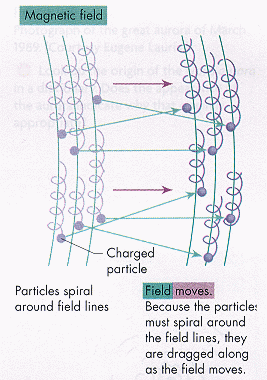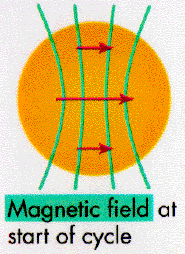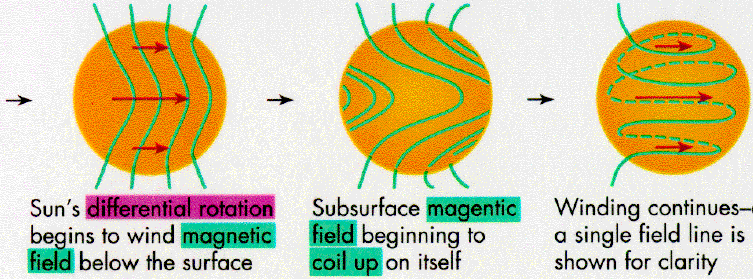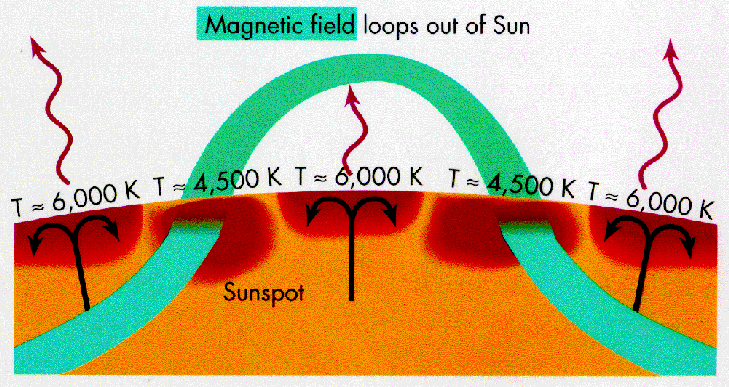The Solar Dynamo
The magnetic field of sunspots is important clue as to what
is happening. Let's do a quick review of magnetic fields and charged particles...
Magnetic fields and charged particles go hand in
hand.
-
Magnetic fields are produced by the motions of charged particles
-
 Charged
particles are accelerated by magnetic fields:
Charged
particles are accelerated by magnetic fields:

Because of this force, charged
particles cannot cross magnetic field lines. Or depending on
your point of view, magnetic field lines are unable to move freely through
a sea of charged particles. We say that the magnetic
field lines are frozen in.
Okay, back to the Sun. Let's look at the solar
dynamo.
-
Remember the convective motions in the Sun? These are moving
charged particles, and set up a strong magnetic
field. Initially the magnetic field would be a dipole,
like a magnet:

-
But the Sun rotates differentially, right? The poles rotate
slower than the equator. This differential rotation
causes the magnetic field of the Sun to wind up.

-
As the magnetic field lines wind up and become a toroidal
field, they can form kinks which break through
the surface.

-
Where they break through the surface, they
inhibit convection cells underneath them from rising to the surface.
Remember, charged particles cannot cross magnetic field lines! Since there
is no hot gas rising, so the surface stays cooler: sunspots!
Sunspots
occur in pairs, where the field line first breaks out of the Sun, then
where it goes back in.

-
This continues, first near the poles, then closer to the
equator, until the magnetic field lines are so tightly would up that magnetic
reconnection reestablishes the simple
dipole field, but with the polarity reversed. Then it
all starts again...
This model is a good qualitative model which describes many
of the features of the solar cycle, but much of the detail remains to be
worked out.
 Charged
particles are accelerated by magnetic fields:
Charged
particles are accelerated by magnetic fields:
 Charged
particles are accelerated by magnetic fields:
Charged
particles are accelerated by magnetic fields:



